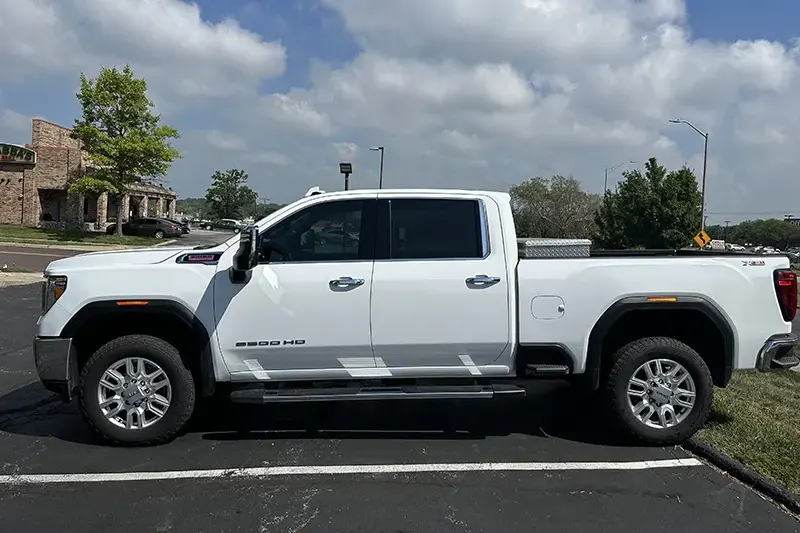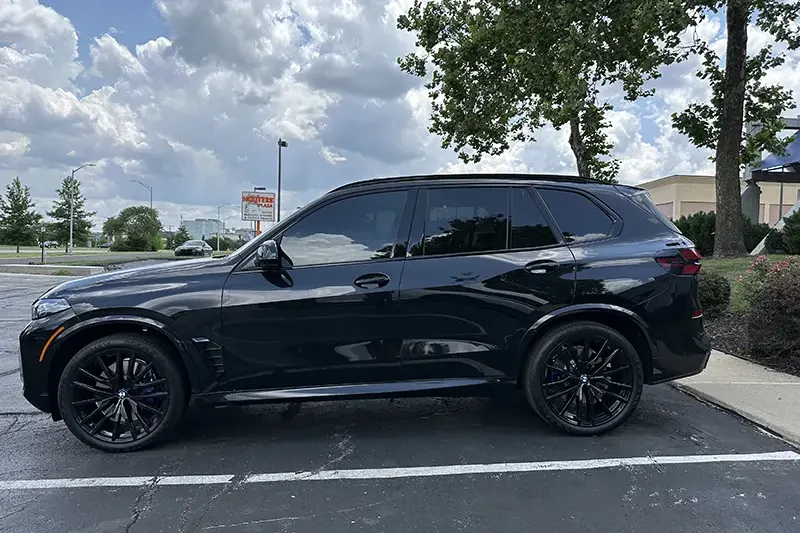What To Expect When Getting Your Windows Tinted
If you’ve never had your windows tinted, and you’re not sure where to start, you’ve come to the right place. Anyone can try tinting, but only a pro can bring out that unique elegance! Professional tinting will definitely cost a little more, but it’s worth that extra charge. Many of the techniques required for a perfect tint installation are learned over time with repetition and repeated practice.


Here are a few tips from the professionals here at Midwest Tinting:
- Find a reputable company: Midwest Tinting has been Kansas City’s leading provider of window tinting products and services since 1975.
- Read the reviews: Unfortunately, not all window tinting companies are the same. Please take a look at the hundreds of 5-star reviews our customers have shared over the years.
- Don’t be afraid to ask questions:
- Ask what type of film is used
- Is there a warranty available?
- If you work or travel a lot in your vehicle, you might consider finding out if there is an option to upgrade to a ceramic film, which rejects more heat.
- Certain car models or vehicles with curvature, larger glass or special features may take longer and require more attention to detail. Make sure your technician is experienced! Cars such as the Tesla Model 3, Volkswagen Bugs, older Corvettes and many old school cars have larger glass with difficult curvature.
- Please note: if your car windows are already tinted, it will affect the cost.
FREQUENTLY ASKED QUESTIONS ABOUT WINDOW TINTING
Can I remove existing window tint myself?
You can remove window film yourself, but if a lot of adhesive or glue is left on the glass, and in the seals, most companies will still charge for removal. Removing film from the back window is what requires the most effort, because of the defrost lines. If not done correctly, the tint could come off in layers, and cost you even more in the long run. There is always a chance the defrosters could be damaged in the removal process, as some films and adhesives are much stronger. Removing tint can take up to 4 – 5 hours to complete, and is usually best left to a professional who is familiar with the proper removal techniques.
What causes window film to fail?
Window film absorbs radiation, and the sun’s rays can break down the dyes and adhesives in the film as the years progress. The older a vehicle is, the more likely an out-of-date film was used. Beware of cheap films, or films with no warranty, as in some cases, the failure of the film can only take a few years. Therefore, emphasizing the importance of finding out what kind of warranty is available, when getting quotes for tinting your car.
Factory tinted glass
Vans, trucks, SUV’s, and some crossovers are usually tinted on the back half, with no color on the front two, driver and passenger windows. It’s factory-dyed glass, meaning the glass itself is already colored (most manufactures put 20% on the back). When calling around for quotes, you’ll have to decide if you want just the front two doors tinted, or if you’d like to do overlay the factory tint and make the back darker. The legal limit for the front windows varies by state. Aftermarket tint is a film that is applied on the inside of the glass.
The visor strip: commonly known as the "brow"
The brow will usually have an arch to it, and that curvature follows the shape of the windshield. Because the glass is curved, the brow curves with it. If you don’t like the arched appearance, and want a straight brow, your tint professional should have access to a database which will cut the brow so that the line appears straight instead of curved.
How long will it take to tint my car?
To tint just the front two doors, can take about 45 mins. to an hour. A coupe, sedan, or truck can be completed in roughly an hour and a half to two hours. SUV’s, Vans, and specialty vehicles may take just a little longer. Certain car models with older seals, difficult curvature, or special features may take longer as well. Consult with your tint professional about your specific vehicle.
What's the legal limit for window tint?
In the state of Kansas, the legal limit is 35% on the sides and the back-glass. In Missouri, there is no legal limit for the back half, but the front two driver and passenger windows must remain at 35%. We have some customers who say they drive in both states, and don’t want to risk getting a ticket. In order to be legal, you must abide by the tinting laws in the state your vehicle is registered to. For tint laws in other surrounding states, see the chart pictured to the right.
Dot Matrix
Dot matrix is a common border on automotive windows, it is a raised, painted surface with holes. Tint is not designed to be installed over raised, or non-glass surfaces. This area will have a lighter, or silver appearance and is not guaranteed to be consistent. On most vehicles, you won’t even notice it. However, certain makes & models have more than just a small boarder. For example, older Honda Accord coupes, and Nissan Altima coupes have a large dot matrix at the top of the rear window.
What happens if there are existing flaws in the glass?
If you have any scratches, abrasions, or nicks on the glass, they will appear more noticeable after being tinted. They could look like a hair, bubble, or crease once a film is placed on the glass.
WINDOW TINT AFTER CARE:
- Do not roll down the windows for 3-5 days in cold weather, or 2-3 days in warm weather.
- You will notice a streaky, watery, hazy, or bubbling appeared. It’s just water trying to work it’s way out of the thick material. Give it two weeks for all the moisture to evaporate.
- Do not poke, push, or press on any bubble while the film cures.
- Be careful of seatbelt nicks, and ring or key scratches. Window tint has a scratch resistance coating, however, sharp or metal objects can cause abrasions.
- Do not clean your window tint with products containing ammonia or vinegar.
- Streaking on doors can occur, but we only use Dawn dish soap and water during the application process. Simply wiping the door panel should removing any remaining residue.
For inquiries, quotes, and scheduling give your experts at Midwest Tinting a call. We’re eager to answer your questions and make sure all your auto customization needs are met! With 45 years in business, 3 convenient locations, and top of the line products, you don’t want to go anywhere else.